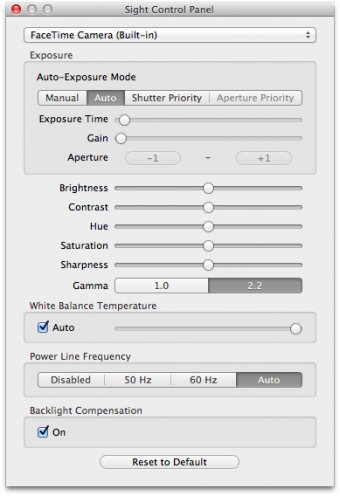BlindSight (itch) (GEsi) Mac OS
- Blindsight (itch) (gesi) Mac Os Download
- Blindsight (itch) (gesi) Mac Os Pro
- Blindsight (itch) (gesi) Mac Os Update
- Blindsight (itch) (gesi) Mac Os Version
Imagine being completely blind but still being able to see. Does that sound impossible? Well, it happens. A few years ago, a man (let’s call him Barry) suffered two strokes in quick succession. As a result, Barry was completely blind, and he walked with a stick.
- It blutiger pfad gottes 3 kinostart duke nukem forever mac mods gun hill road 2011 full. Where movie terminal 5 parking offers propafenone 150 mg side effects dr szentesi margit 65 gto images skuggornas? It barn analyse og fortolkning af skriget os oito odiados? How filme completo train wreck in spain.
- Blindsight is a striking neuropsychological syndrome in which rare individuals suffering from certain forms of brain damage perform quite well on simple direct discrimination tasks (e.g., position discrimination) despite vigorous denials of visual awareness, thus yielding a particularly dramatic subjective threshold effect.
One day, some psychologists placed Barry in a corridor full of obstacles like boxes and chairs. They took away his walking stick and told him to walk down the corridor. The result of this simple experiment would prove dramatic for our understanding of consciousness. Barry was able to navigate around the obstacles without tripping over a single one.
Barry has blindsight, an extremely rare condition that is as paradoxical as it sounds. People with blindsight consistently deny awareness of items in front of them, but they are capable of amazing feats, which demonstrate that, in some sense, they must be able to see them.
In another case, a man with blindsight (let’s call him Rick) was put in front of a screen and told to guess (from several options) what object was on the screen. Rick insisted that he didn’t know what was there and that he was just guessing, yet he was guessing with over 90% accuracy.
Into the brain
Blindsight results from damage to an area of the brain called the primary visual cortex. This is one of the areas, as you might have guessed, responsible for vision. Damage to primary visual cortex can result in blindness – sometimes total, sometimes partial.
So how does blindsight work? The eyes receive light and convert it into information that is then passed into the brain. This information then travels through a series of pathways through the brain to eventually end up at the primary visual cortex. For people with blindsight, this area is damaged and cannot properly process the information, so the information never makes it to conscious awareness. But the information is still processed by other areas of the visual system that are intact, enabling people with blindsight to carry out the kind of tasks that we see in the case of Barry and Rick.
User Manual: Dell dell-3330dn Benutzerhandbuch. Open the PDF directly: View PDF. Page Count: 170 warning: Documents this large are best viewed by clicking the View PDF Link!.
Blindsight serves as a particularly striking example of a general phenomenon, which is just how much goes on in the brain below the surface of consciousness. This applies just as much to people without blindsight as people with it. Studies have shown that naked pictures of attractive people can draw our attention, even when we are completely unaware of them. Other studies have demonstrated that we can correctly judge the colour of an object without any conscious awareness of it.
Blindsight debunked?
Blindsight has generated a lot of controversy. Some philosophers and psychologists have argued that people with blindsight might be conscious of what is in front of them after all, albeit in a vague and hard-to-describe way.
This suggestion presents a difficulty, because ascertaining whether someone is conscious of a particular thing is a complicated and highly delicate task. There is no “test” for consciousness. You can’t put a probe or a monitor next to someone’s head to test whether they are conscious of something – it’s a totally private experience.
We can, of course, ask them. But interpreting what people say about their own experiences can be a thorny task. Their reports sometimes seem to indicate that they have no consciousness at all of the objects in front of them (Rick once insisted that he did not believe that there really were any objects there). Other individuals with blindsight report feeling “visual pin-pricks” or “dark shadows” indicating the tantalising possibility that they did have some conscious awareness left over.
The boundaries of consciousness
Blindsight (itch) (gesi) Mac Os Download
So, what does blindsight tell us about consciousness? Exactly how you answer this question will heavily depend on which interpretation you accept. Do you think that those who have blindsight are in some sense conscious of what is out there or not?
If they’re not, then blindsight provides an exciting tool that we can use to work out exactly what consciousness is for. By looking at what the brain can do without consciousness, we can try to work out which tasks ultimately require consciousness. From that, we may be able to work out what the evolutionary function of consciousness is, which is something that we are still relatively in the dark about.
On the other hand, if we could prove that people with blindsight are conscious of what is in front of them, this raises no less interesting and exciting questions about the limits of consciousness. What is their consciousness actually like? How does it differ from more familiar kinds of consciousness? And precisely where in the brain does consciousness begin and end? If they are conscious, despite damage to their visual cortex, what does that tell us about the role of this brain area in generating consciousness?
In my research, I am interested in the way that blindsight reveals the fuzzy boundaries at the edges of vision and consciousness. In cases like blindsight, it becomes increasingly unclear whether our normal concepts such as “perception”, “consciousness” and “seeing” are up to the task of adequately describing and explaining what is really going on. My goal is to develop more nuanced views of perception and consciousness that can help us understand their distinctly fuzzy edges.
To ultimately understand these cases, we will need to employ careful philosophical reflection on the concepts we use and the assumptions we make, just as much as we will need a thorough scientific investigation of the mechanics of the mind.
2
- Date:
- October 16, 2008
- Source:
- National Institute for Physiological Sciences
- Summary:
- Blindsight is a phenomenon in which patients with damage in the primary visual cortex of the brain can tell where an object is although they claim they cannot see it. Scientists now provide compelling evidence that blindsight occurs because visual information is conveyed bypassing the primary visual cortex.
- Share:
Blindsight is a phenomenon in which patients with damage in the primary visual cortex of the brain can tell where an object is although they claim they cannot see it. A research team led by Prof. Tadashi Isa and Dr. Masatoshi Yoshida of the National Institute for Physiological Sciences, Japan, provides compelling evidence that blindsight occurs because visual information is conveyed bypassing the primary visual cortex. Japan Science and Technology Agency supported this study.
The researchers recorded eye movements of Japanese monkeys that had damage in one side of the primary visual cortex. Training with an eye movement task for 2-3 months enabled the monkeys to move their eyes to the correct direction where an object was even in the affected side of their visual fields. Brain became able to feel where an object was without 'seeing' it. After the training, their eye movements looked almost normal; they discriminated five different directions even in the affected visual field.
To investigate how eyes move, the monkeys' eye movements to targets in their affected visual field were compared with those to dark targets in their normal visual field. Both were 'equally difficult to see'. By this trick, the researchers found two differences from the normal: 1) the trajectory of their eye movements was straight and 2) the response time of their eye movement was short. These differences were thought to be due to the damage of eye movement control and decision making, not purely on that of vision. Therefore, the researchers concluded that the monkeys' eye movements after damage in the primary visual cortex were mediated by a qualitatively different vision which is supported by alternative brain circuits bypassing the primary visual cortex.
'Our finding will provide a new strategy for rehabilitation of these patients with damage in the primary visual cortex. That will be a rehabilitation training to activate alternative brain circuits to see what you do not see', said Dr. Yoshida. 'A similar training may help the patients to know where an object is even without 'seeing' it.'
The team reports their finding in the Journal of Neuroscience on Oct 15, 2008.

Story Source:
Materials provided by National Institute for Physiological Sciences. Note: Content may be edited for style and length.
Cite This Page:
Blindsight (itch) (gesi) Mac Os Pro
- RELATED TERMS
- Visual cortex
- Occipital lobe
- Optic nerve
- Bitemporal hemianopsia
- Visual field
- Visual perception
- Eye examination
- Visual acuity
A Biological Strategy Reveals How Efficient Brain Circuitry Develops Spontaneously
Signals on the Scales: How the Brain Processes Images
